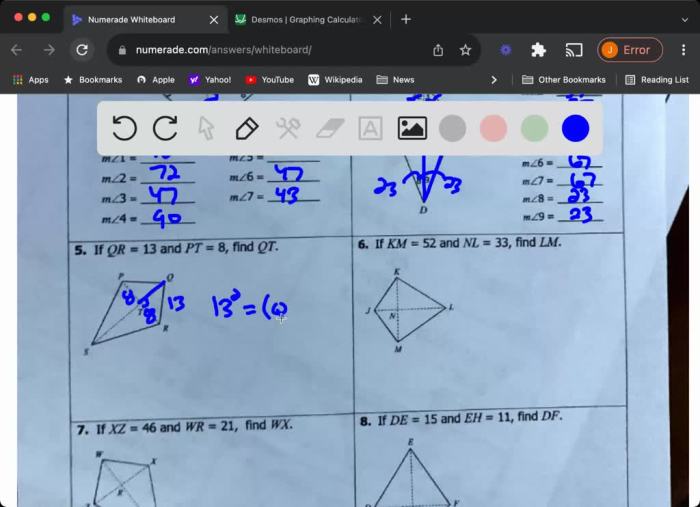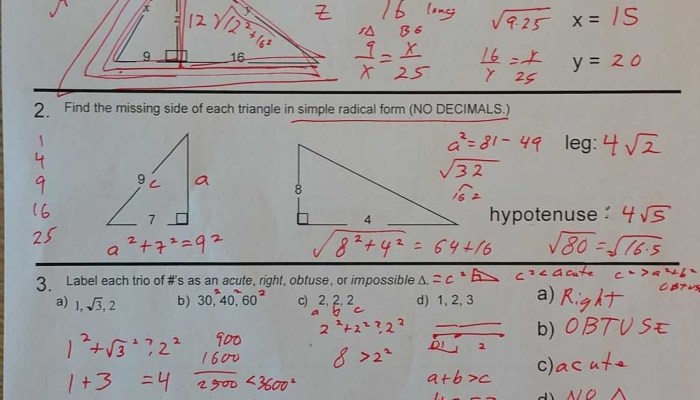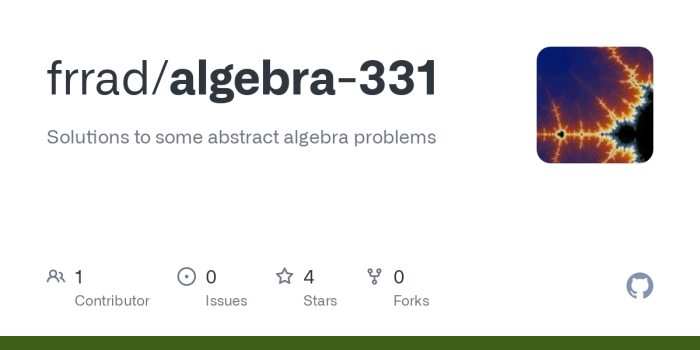Embark on a journey into the realm of polygons and quadrilaterals, where we unlock the mysteries of these fascinating geometric shapes. Polygons and quadrilaterals answer key serves as your trusted guide, providing a comprehensive understanding of their properties, relationships, and real-world applications.
Delve into the fundamental concepts of polygons and quadrilaterals, exploring their distinct characteristics and diverse types. Discover the key properties that define these shapes, including their number of sides, angles, and diagonals. Understand the hierarchical relationship between polygons and quadrilaterals, identifying the unique traits that distinguish quadrilaterals from other polygons.
1. Definitions and Concepts
Polygons are closed figures formed by straight line segments that meet at vertices. Quadrilaterals are polygons with four sides and four vertices.
Examples of polygons include triangles, squares, rectangles, pentagons, hexagons, and octagons. Examples of quadrilaterals include squares, rectangles, parallelograms, rhombi, and trapezoids.
2. Properties of Polygons and Quadrilaterals: Polygons And Quadrilaterals Answer Key

Polygons have various properties, including the number of sides, angles, and diagonals. Quadrilaterals have specific properties related to their sides and angles.
- Polygons:
- Number of sides: Polygons can have any number of sides (minimum of 3).
- Number of angles: The number of angles in a polygon is always two less than the number of sides.
- Number of diagonals: The number of diagonals in a polygon with nsides is given by the formula n(n-3)/2.
- Quadrilaterals:
- Types of sides: Quadrilaterals can have all sides equal (square, rhombus), opposite sides equal (rectangle, parallelogram), or no sides equal (trapezoid).
- Types of angles: Quadrilaterals can have all angles equal (square), opposite angles equal (rectangle, parallelogram), or no angles equal (trapezoid).
3. Relationships between Polygons and Quadrilaterals
Quadrilaterals are a subset of polygons. All quadrilaterals are polygons, but not all polygons are quadrilaterals.
The distinguishing characteristic of quadrilaterals is that they have four sides and four vertices. This property sets them apart from other polygons, which can have any number of sides.
4. Applications of Polygons and Quadrilaterals

Polygons and quadrilaterals are used in various real-world applications, including architecture, engineering, design, and art.
- Architecture:Polygons and quadrilaterals are used in the design of buildings, bridges, and other structures. For example, triangles are used to create strong and stable structures, while rectangles and squares are used to create aesthetically pleasing designs.
- Engineering:Polygons and quadrilaterals are used in the design of machines, vehicles, and other mechanical devices. For example, gears are often made of polygons, and the chassis of cars are often made of quadrilaterals.
- Design:Polygons and quadrilaterals are used in the design of logos, posters, and other graphic elements. For example, triangles can be used to create dynamic and eye-catching designs, while squares and rectangles can be used to create more stable and formal designs.
- Art:Polygons and quadrilaterals are used in the creation of paintings, sculptures, and other works of art. For example, triangles can be used to create abstract and geometric designs, while squares and rectangles can be used to create more realistic and representational images.
5. Common Misconceptions
There are several common misconceptions about polygons and quadrilaterals.
- All polygons are regular:This is not true. Regular polygons have all sides and angles equal, but irregular polygons do not.
- All quadrilaterals are squares:This is not true. Squares are a specific type of quadrilateral with all sides and angles equal. Other types of quadrilaterals include rectangles, parallelograms, rhombi, and trapezoids.
- Polygons can have any number of sides:This is not true. Polygons must have at least three sides. Figures with only two sides are called line segments, and figures with only one side are called points.
User Queries
What is the difference between a polygon and a quadrilateral?
A polygon is a closed figure with straight sides, while a quadrilateral is a specific type of polygon with four sides.
What are the properties of a square?
A square is a quadrilateral with four equal sides and four right angles.
How many diagonals does a pentagon have?
A pentagon has five diagonals.

